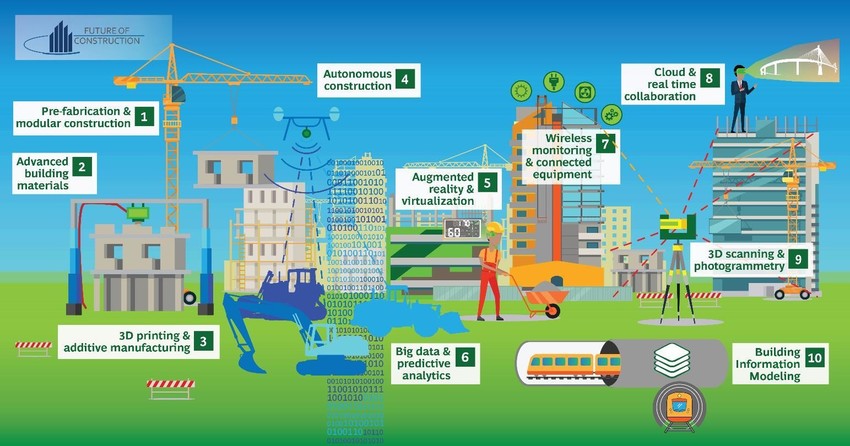The Fourth Industrial Revolution is about to hit the construction industry
Source: World Economic Forum
weforum.org
Image: World Economic Forum, Boston Consulting Group
Over the past decade, digital progress has transformed whole industries, ushering in a new technological era now known as the Fourth Industrial Revolution. Platforms and streaming services such as Facebook, Spotify and Netflix have transformed media and entertainment. E-commerce giants including Amazon and Alibaba have disrupted bricks-and-mortar retailers. Digital mobility companies are challenging automotive manufacturers.
These new technologies are not only satisfying consumer demand for better entertainment, shopping and transport. Innovation has improved companies’ productivity and sustainability, and redefined the skills and competencies needed to thrive.
However, over the same period, the construction industry has continued to operate as it has for the past 50 years. It still relies heavily on manual labour, mechanical technology and established operating and business models. As a result, productivity has stagnated.
Only recently have digital technologies begun to enter the industry, gradually changing how infrastructure, real estate and other built assets are designed, constructed, operated and maintained. These technologies, including building information modeling (BIM), prefabrication, wireless sensors, 3D printing and automated and robotic equipment, are affecting the entire industry. Their economic and social impact could be substantial, given that the construction industry accounts for 6% of global GDP.
Within a decade, full-scale digitization could help the industry escape its decades-long stagnation and generate an estimated 12-20% in annual cost savings, equal to between $1 trillion and $1.7 trillion, according to our estimates.
Global megatrends should also motivate businesses to rethink industry practices that have not advanced. Climate change, resource depletion, a widening talent gap and rapid urbanization – more than 200,000 people are moving into cities from rural areas every day – are but a few of these trends.
A new report, Shaping the Future of Construction: Future Scenarios and Implications depicts three potential outcomes based on these new forces. The future is likely to include elements of each one.
“Current business models, strategies and capabilities will not be sufficient in any of these future worlds”, says Michael Burke, Chairman and CEO of AECOM and Co-Chair of the World Economic Forum Infrastructure and Urban Development community.
“Players along the construction value chain need to prepare strategically…

